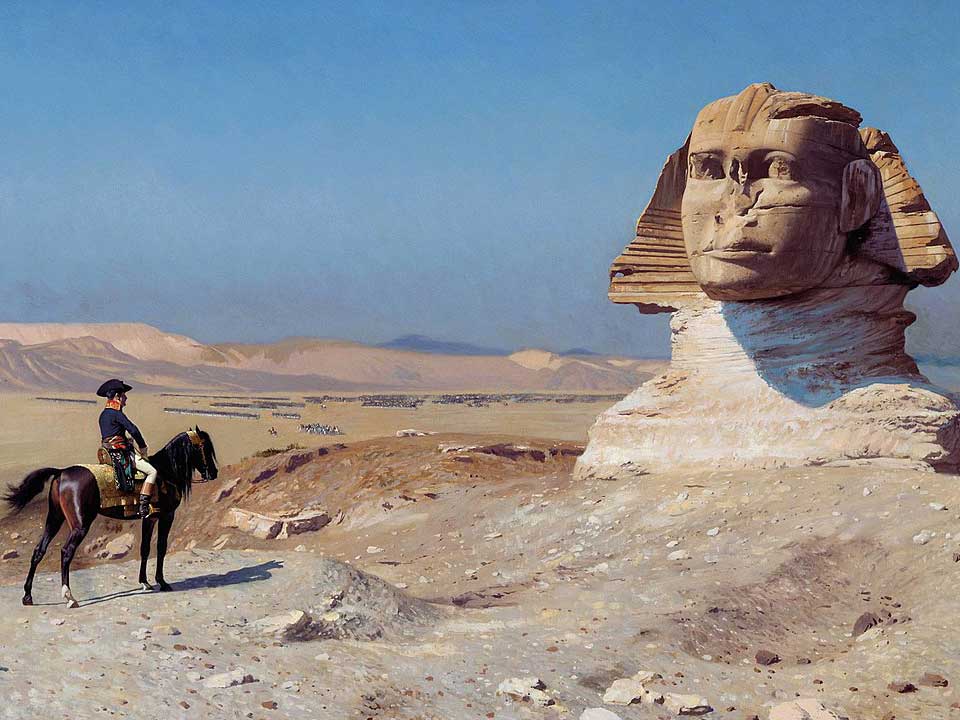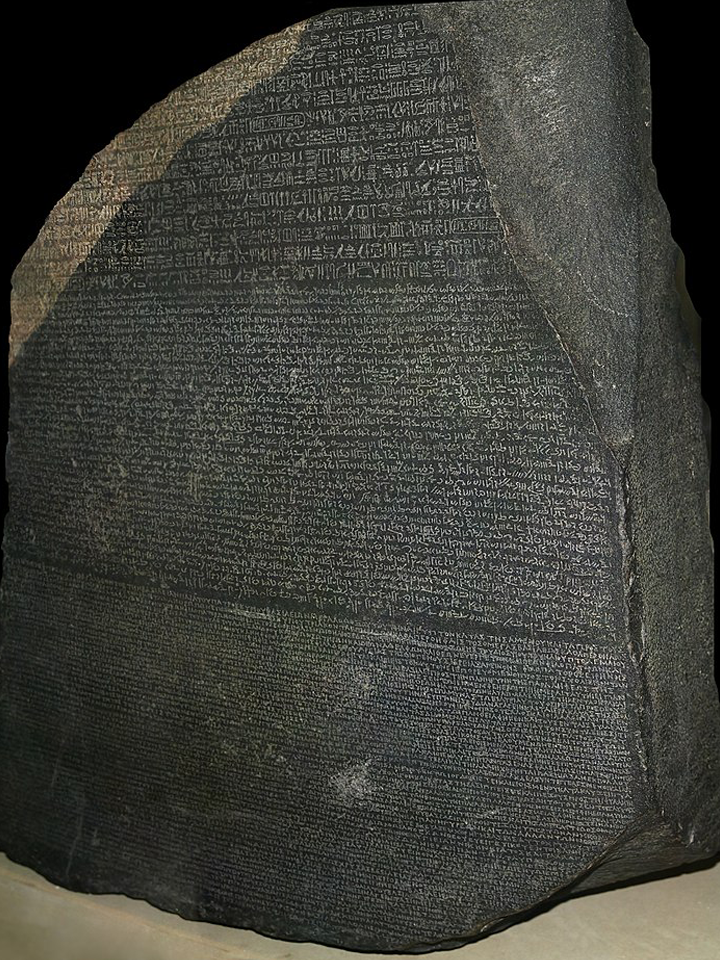The Napoleonic Campaign & the Rosetta Stone


In 1798, Napoleon Bonaparte, a French general with aspirations of becoming an emperor, led French forces into Egypt. Alongside 38,000 soldiers was a collection of 167 of the greatest scholarly minds in France, called savants.
Napoleon was interested in conquering Egypt and claiming it as a colony, but he also wanted the savants to perform research on the area, and share European technological advances. When Napoleon’s campaign failed in 1801, the notes the scholars had taken were compiled. In 1803, the publication of a series called Le Description de L’Egypt began, and over the next 20 years, the research that had been performed into ancient Egyptian monuments, history, and culture was available for public consumption. This is considered by some to be the start of modern Egyptology.
Another achievement of this campaign was the discovery of the Rosetta Stone. This large stone slab is unique in that it is engraved with the same message three times, in three different scripts. The first was written in Egyptian hieroglyphs, a language which had long been lost to time. Demotic, the second script, is a cursive form of hieroglyphs, and was equally a mystery. But the third was Greek, a very well-known language.
This enabled the first modern translation of ancient Egyptian hieroglyphs. English physicist Thomas Young was able to recognize that the name of the pharaoh, Ptolemy V, was identifiable in both the Greek section and the Egyptian section. Then, scholar Jean-Francois Champollion was able to decode not only the meaning of specific hieroglyphs, but the language they used as well.
In 1822, he published his findings, and the study of ancient Egypt suddenly became much more accessible to the common person, and much more interesting.

At-A-Glance
- Future French emperor led a military campaign into Egypt, taking with him 167 scientists and scholars.
- The scholars researched Egypt and its history, and eventually published Le Description de L’Egypt, a text which would introduce Egypt to the common European citizen.
- Also on this trip, they discovered the Rosetta Stone, leading to the translation of ancient Egyptian hieroglyphs by Jean-Francois Champollion.


